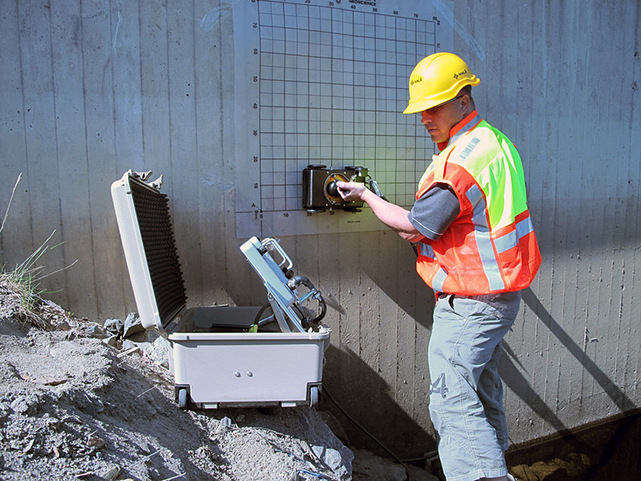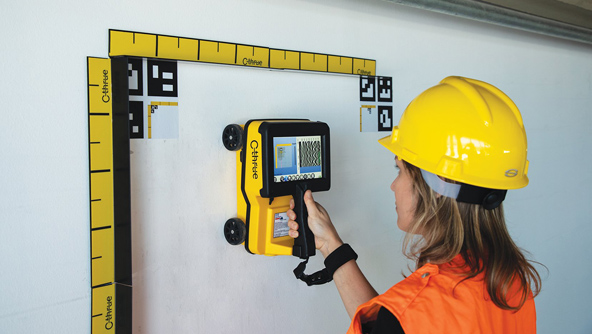Discover RainierGPR Service Areas for Trusted Concrete Scanning Solutions
Discover RainierGPR Service Areas for Trusted Concrete Scanning Solutions
Blog Article
Concrete Scanning: An Essential Action Towards Making Sure Structural Stability and Safety
In the realm of building and infrastructure maintenance, the importance of concrete scanning can not be overstated. This meticulous procedure holds the vital to introducing prospective dangers hidden below the surface of seemingly strong frameworks. By using sophisticated innovation and approaches, concrete scanning acts as a pivotal device in making certain that the integrity and safety and security of structures and bridges are upheld to the highest possible criteria. Nevertheless, beyond its surface-level implications, the role of concrete scanning expands much much deeper than satisfies the eye.
Relevance of Concrete Scanning
Concrete scanning plays a crucial duty in making certain the structural stability and safety of structures and facilities jobs. By making use of sophisticated modern technologies such as ground-penetrating radar (GPR) and electromagnetic induction, specialists can non-destructively examine concrete frameworks to spot potential flaws, spaces, ingrained objects, and support layout. This process makes it possible for early detection of abnormalities that might compromise the security of a framework, preventing expensive damages and making certain the security of passengers.
Concrete scanning is specifically crucial during the planning and building and construction phases of a task. Prior to drilling, reducing, or coring into concrete, scanning helps determine the precise places of rebar, post-tension cords, and other ingrained aspects, lowering the threat of unintended hits that can lead to structural weaknesses. In addition, concrete scanning help in top quality control by validating the density of concrete covers and detecting any type of disparities that might influence the general sturdiness of the framework. Inevitably, investing in concrete scanning solutions is not only a proactive step to minimize threats yet additionally a basic step in the direction of keeping the long-lasting safety and security and stability of buildings and facilities.
Technology for Concrete Examination

Benefits of Very Early Detection
Timely detection of architectural concerns can dramatically mitigate risks and guarantee the longevity of building tasks. By identifying potential troubles early on in the building process, stakeholders can take aggressive measures to attend to problems before they rise right into bigger and more pricey troubles. One of the essential benefits of early discovery is the avoidance of structural failings, which can posture serious security hazards and result in project delays and economic losses.
In addition, very early detection enables timely fixings and upkeep, which can help prolong the life expectancy of the structure. By attending to issues immediately, building teams can avoid costly fixings and even the requirement for premature replacement of structural components. This positive approach not just conserves time and cash however likewise enhances the general safety and security and longevity of the building and construction project.
Additionally, early discovery can improve project planning and decision-making by giving stakeholders with beneficial understandings into the problem of the framework. Armed with this info, project supervisors can make informed choices relating to building timelines, products, and approaches, bring about a lot more successful informative post and efficient task outcomes.
Guaranteeing Structural Stability
Ensuring the architectural stability of a construction project is vital to its safety and security and durability. Architectural stability describes the capability of a building or infrastructure to keep its kind and function under different lots and ecological conditions. To accomplish this, complete assessment and monitoring of the structure are necessary. Concrete scanning plays a vital role in making sure structural security by spotting possible concerns such as voids, delamination, or reinforcement rust that could endanger the stability of the structure with time.
By utilizing sophisticated scanning technologies like ground-penetrating radar (GPR) and electromagnetic induction, building experts can non-invasively evaluate concrete frameworks to determine locations of worry underneath the surface area. This positive method permits the very early detection of problems or weaknesses, allowing punctual repairs or support to avoid architectural failings.
Routine concrete scanning throughout various building and construction phases and throughout the life cycle of a structure can help preserve its stability, reduce dangers, and ensure the safety and security of owners. By prioritizing structural stability with concrete scanning, building tasks can enhance their strength and resilience, inevitably adding to greater safety and longevity.

Stopping Vital Failings
To guard versus tragic occasions, precise monitoring and positive maintenance are important in preventing critical failures within structural structures. Spotting possible problems prior to they intensify is crucial to stop architectural failures. Executing routine examinations, such as concrete scanning, can expose concealed defects like spaces, splits, or rust that can jeopardize the integrity of a framework. By utilizing sophisticated scanning technologies like Ground Passing through Radar (GPR) or Concrete X-ray, engineers can non-destructively evaluate the problem of concrete and recognize powerlessness that call for reinforcement or fixing - RainierGPR Service Areas.

Verdict
To conclude, concrete scanning plays an important duty in making sure architectural integrity and safety and security by utilizing advanced technology for early detection of prospective problems. This proactive approach helps protect against crucial failings and guarantees the security of frameworks. It is vital to prioritize concrete evaluation as a conventional method to secure the long life and safety and security check my blog of structures and framework.
Concrete scanning plays continue reading this a crucial duty in ensuring the architectural honesty and safety and security of structures and facilities jobs. Furthermore, concrete scanning aids in top quality control by verifying the thickness of concrete covers and spotting any type of inconsistencies that may influence the general resilience of the framework. Concrete scanning plays an important duty in ensuring structural stability by finding possible problems such as gaps, delamination, or support deterioration that could endanger the integrity of the framework over time.

In verdict, concrete scanning plays an essential function in ensuring structural honesty and security by utilizing innovative innovation for very early detection of potential problems.
Report this page